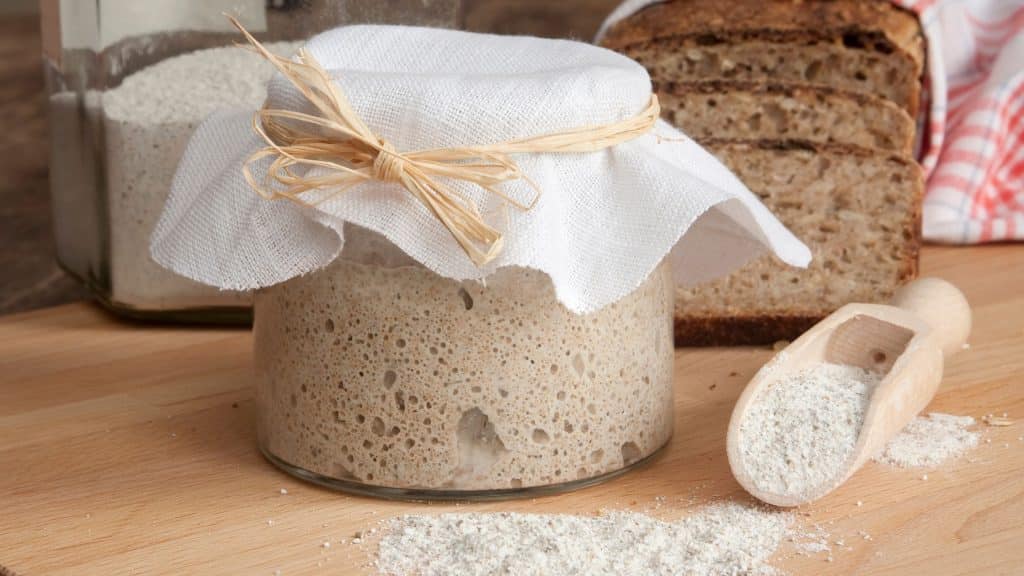What Does Sourdough Bread Taste Like? Find Out Now!
Have you ever wondered what does sourdough bread taste like? If so, describing the taste of sourdough is not as simple as saying it’s “sour.”
The flavor profile of sourdough can vary depending on factors such as the type of flour used, the length of fermentation, and the temperature at which the bread is baked. Some sourdough loaves may have a more subtle, nutty flavor, while others may have a tanginess to it.
In this blog post, we’ll explore the flavor and texture of sourdough bread and the science behind it.
What is Sourdough?

Sourdough bread is a type of bread made with a sourdough starter, which is a mixture of flour and water that has been fermented with wild yeasts and bacteria. This fermentation process is what gives sourdough bread its unique flavor and texture.
The History
The history of sourdough bread can be traced back to ancient civilizations. Around 1500 BC, the first recorded civilization that made sourdough bread was the Egyptians, where it was a staple food.
Flavor Profile of Sour Dough
Sourdough bread has a distinct flavor profile that sets it apart from bread made with commercial yeast. The most notable characteristic is its tangy and slightly acidic flavor. These flavors are due to the wild yeasts and lactic acid bacteria that are present in the sourdough starter. The acidity gives the bread a more complex and nuanced taste, compared to the milder flavor of bread made with commercial yeast.
The flavor of sourdough bread can also vary depending on the ingredients and techniques used in the bread-making process. For example, using whole wheat flour or adding herbs and spices can give the bread a nuttier or more savory flavor. The fermentation time and temperature can also affect the flavor, with longer fermentation times resulting in a stronger sour taste.
One of the most appealing aspects of sourdough bread is the fact that each loaf can have its own unique taste and aroma, due to the natural fermentation process. This means that no two loaves of sourdough bread will taste exactly the same, making it a fascinating and delicious food to explore.
Texture of Sour Dough Bread
In addition to its unique flavor, sourdough bread also has a distinct texture. It is generally chewier compared to bread made with commercial yeast. This chewiness is due to the gluten structure of the dough, which is strengthened by the natural fermentation process.
The fermentation time and kneading techniques are some of the factors that affect the texture of sourdough, just like with other types of bread. A longer fermentation time can result in a more open crumb structure, while a shorter fermentation time will result in a tighter crumb structure. The way the dough is kneaded can also influence the texture, with more aggressive kneading resulting in a denser bread.
When comparing the texture of sourdough bread to other types of bread, it can be described as having a more rustic and hearty feel. The chewiness of the bread can be a pleasant contrast to the tangy flavor, making it a satisfying and enjoyable eating experience.
Overall, the texture of sourdough bread is a major component of its appeal, and it is one of the reasons why many people prefer it to other types of bread. It is bread that requires a bit more time to make, but the result is bread that has a unique texture, flavor, and aroma that is worth the wait.
What Does Sourdough Bread Taste Like (The Science)
The unique flavor of sourdough bread is a result of the fermentation process that takes place during the bread-making process. The sourdough starter, a mixture of flour and water that has been fermented with wild yeasts and lactic acid bacteria, plays a key role in this process.
During fermentation, the wild yeasts and lactic acid bacteria consume the sugars in the flour and release carbon dioxide and other compounds. The carbon dioxide causes the dough to rise, while the mixture of compounds contributes to the flavor of the bread. The lactic acid bacteria also produce lactic acid, which gives the bread its tangy flavor.
The taste of sourdough bread can also be influenced by the ingredients used. For example, using whole wheat flour can give the bread a nuttier flavor, while adding herbs or spices can add additional layers of flavor.
The fermentation time also plays a role in the flavor of the bread. A longer and slower fermentation time will result in a stronger sour taste, while a shorter fermentation time will result in a milder flavor. The temperature at which the bread is fermented can also affect the flavor, with colder temperatures resulting in a slower fermentation, which contributes to a stronger flavor.
In summary, the flavor of sourdough bread is the result of the complex interactions between the wild yeasts and lactic acid bacteria in the sourdough starter, the ingredients used, and the fermentation time and temperature. This interplay of factors creates a unique and delicious flavor that sets sourdough bread apart from other types of bread.
We encourage readers to try making their own sourdough bread at home and to experiment with different ingredients and techniques to discover their own unique sourdough bread.